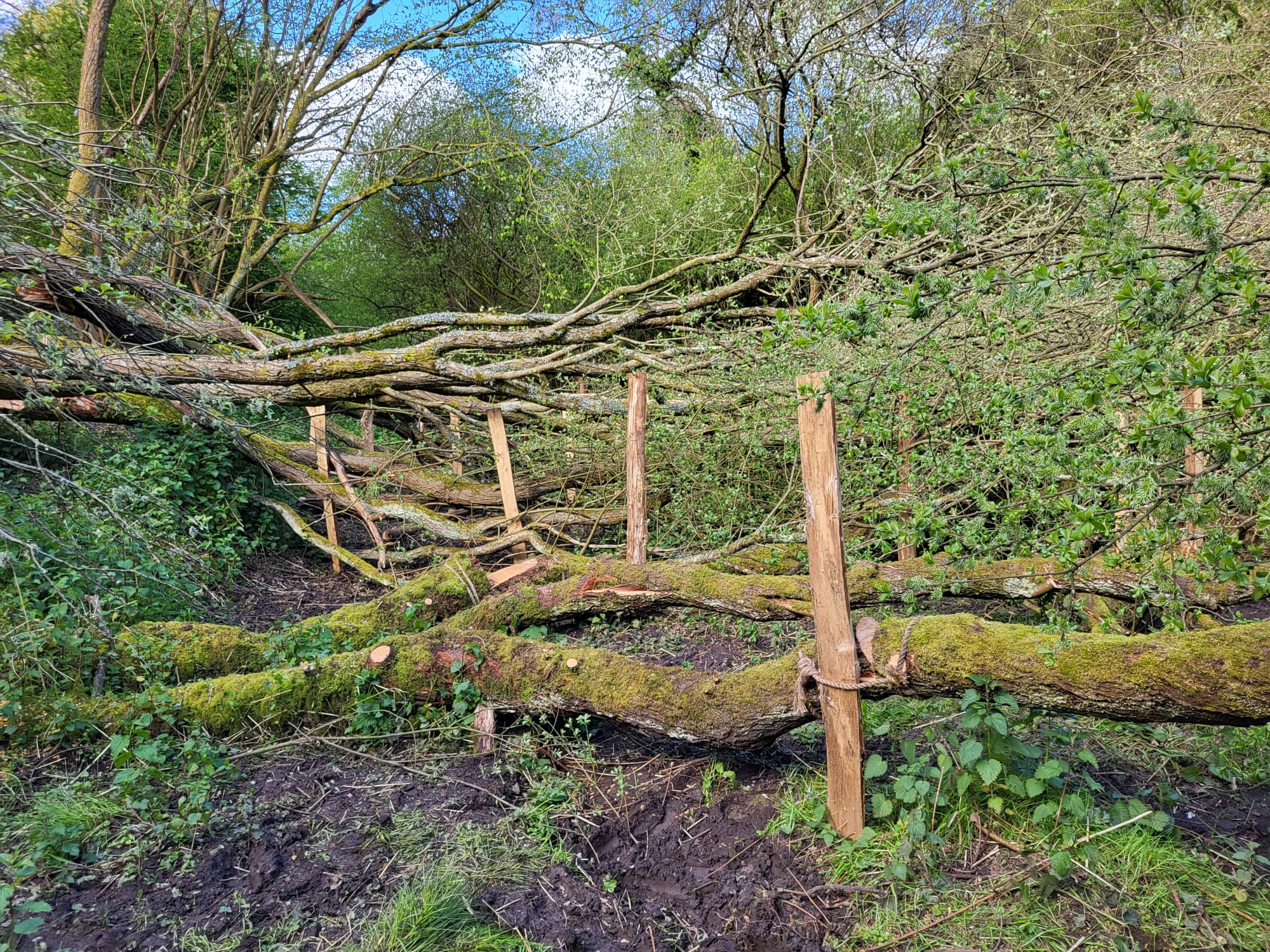
Natural flood prevention scheme to help homes in Wheatley and Littleworth
A new natural flood management scheme is now in place at the Littleworth Nature Reserve aiming to reduce the flood risk for those living downstream in Wheatley.
South Oxfordshire District Council has worked with Oxfordshire County Council and was awarded £21,350 from an Environment Agency fund for natural flood management for this project.
The councils employed the Freshwater Habitat Trust to design a scheme for the Littleworth Nature Reserve to slow the flow of water through the railway cutting at the site and provide temporary water storage within the nature reserve itself.
This should reduce the risk of flooding to areas downstream including Littleworth and Wheatley, which had been affected previously during periods of prolonged heavy rain.
In addition, a culvert entrance within the nature reserve was cleared and an extra grate added upstream to trap leaves and silt to reduce the risk of the main entrance to the culvert getting blocked.
A series of natural ‘hinge’ dams were created using eight willow trees on site, which involved cutting part way through the tree trunks and folding them over, leaving the tree still attached to the stump so that the dam remains a living structure.
Finally, contractors installed willow spilling – weaving branches between wooden stakes – to act as a natural flood barrier along the route of the water in the railway cutting. This creates a leaky hedge-like structure that will help slow the flow of water outwards.
Both the hinged trees and willow spiling should resprout and take root, strengthening the structures over time and increasing channel ‘roughness’.
South Oxfordshire District Council cabinet member for environment, Cllr Sam James-Lawrie, said: “This is a great example of how we can make changes using natural means to create flood management schemes, using resources such as nature reserves and trees. Employing measures such as these will become more and more important as we adapt to changes to our climate.”
Councillor Pete Sudbury, Deputy Leader of Oxfordshire County Council with Responsibility for Climate Change, Environment and Future Generations, said: “Flooding is devastating for those who experience and sometimes even those who witness it, and our climate is changing in ways that make it more common and difficult to prevent.
“That’s why we need as much land as possible to be managed in ways that help hold back or absorb excess rain. Schemes like this are part of the solution, and also create benefits for local habitats.”
Notes to editors
The Freshwater Habitat was supported in their work by Friends of Littleworth Nature Reserve volunteers and Wheatley Parish Council.

